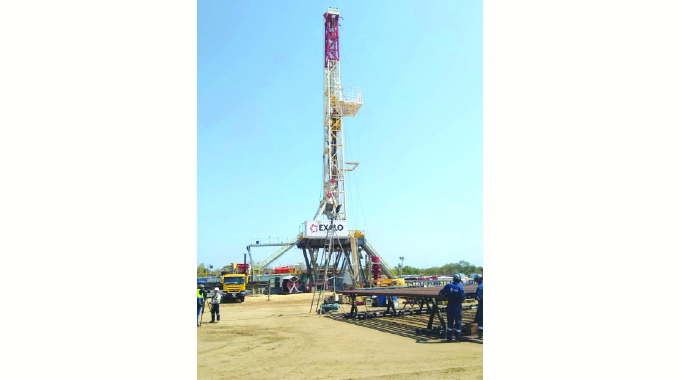Mash Central in 2022: Reflecting on the good and the bad

Fungai Lupande-Mash Central Bureau
Looking back at 2022, Mashonaland Central Province experienced an array of events; some of them good, some bad and weird, leaving residents thrilled and at times, shell-shocked.
From the major Mbire-Muzarabani oil and gas project and Masau fruit value-addition breakthrough, to a pregnant 8-year-old child and a teenage boy killing his mother and drinking her blood, here is a look back at 2022.
The Muzarabani-Mbire oil and gas project has placed Mashonaland Central on the map and serves as proof of the investment opportunities in Zimbabwe as well as the ease of doing business.
Invictus Energy, an Australian-listed company has invested a fortune in sinking the first well in Mbire, employing hundreds of people.
The company set aside US$44 million plus an additional US$17 million to drive the oil and gas search.
Preliminary results released by the company show positive results and strong evidence of the potential presence of gas-bearing zones.
This project is one of the largest oil and gas prospects onshore Africa and possibly globally with an estimate of 20 trillion cubic feet and 845 million barrels of conventional gas condensation or an oil equivalent of about 4,3 billion barrels.
This comes as the Second Republic adopted a new investment strategy to retain and attract new domestic and foreign investments.
These investment opportunities created by the Government have seen a large number of youths in Mbire getting employment opportunities and have pushed the Mbire community to value education.
Through this project, the investor brought into the country high-technology equipment and new technology which results in transferring of skills to the local employees.
Invictus Energy managing director Mr Scott MacMillan said the Second Republic has provided a good investment environment for the company and facilitated ease of doing business in the shipment of sophisticated and huge equipment.
The oil and gas project is expected to drive several downstream economic activities, including refining crude oil and natural gas, logistics, and transportation.
The Mbire Rural District Council (RDC) has started preparations for the expansion of the district.
Mbire district development coordinator Mr Richard Maruta said they have started working on a master plan in preparation for the expansion of the district.
A good road network is a key enabler to economic activities and the construction of Mahuhwe-Kanyemba has been expedited by the contractor, Exodus and Company.
This road which is about 340 kilometres from Harare was prioritised under the Emergency Road Rehabilitation Program (ERRP2).
The ERRP, funded by domestic resources was a result of an outcry by the populace due to the bad state of various major roads.
The Mahuhwe-Kanyemba road was not trafficable during the rainy season and people failed to access rural services centres and health care during that period.
Construction started this year following a long break during the COVID-19 pandemic. The contractor is now a few kilometres shy of reaching the Mushumbi growth point.
The Mahuhwe-Kanyemba road which passes through the first site for the oil and gas project, Mukuyu-1, is critical to the development of the Kanyemba area which the Government envisages as a tourist resort town.
Road construction is at the centre of national development and a key enabler for economic growth.
The Mahuhwe-Kanyemba road will also enhance trade between Zimbabwe, Mozambique and Zambia.
Once complete the Harare-Mahuhwe-Kanyemba road will become an alternative route into north and central Africa apart from Chirundu, cutting the distance short by 400km.
Already a landing bay in Kanyemba is complete.
Under the same programme, the Karanda Bridge was commissioned in April this year by President Mnangagwa.
The bridge brought relief to people in the surrounding community and countrywide who used long alternative routes to access Karanda Mission Hospital.
Situated in Mt Darwin district, Karanda hospital which is run by the Evangelical Church offers exceptional health care services across the country and the region.
The hospital was accessed from Mt Darwin-Nhoro-Karanda road, 62 kilometres long.
The second route was Mt Darwin-Mudzengerere-Karanda road, which is also 60 kilometres away.
The shortest route which passes through the Karanda Bridge is only 44 kilometres.
The access road from the Mt Darwin-Rushinga highway is under construction.
The Harare-Bindura Road was awarded to Bitumen World, which is rehabilitating 45 kilometres of the road starting from Mazowe and progressing towards Bindura.
They started with the reconstruction of a two-kilometre stretch close to the Iron Duke turn-off.
Another major highway, Mt Darwin-Mukumbura is also under construction as well as the 5-kilometre stretch on Bindura-Matepatepa road, which is in progress with a target of 11 kilometres this year.
The province was targeting to complete 89,5 kilometres this year.
Reseal and asphalt overlay on these major highways is progressing well.
Meanwhile, rural district councils in eight districts of the province have procured road rehabilitation equipment to attend to roads under their jurisdiction.
Pfura RDC has rehabilitated roads in Mt Darwin central business district, rehabilitating and spot gravelling of Gomo-Chigango road among other rural roads.
They have an annual target of 302 kilometres, 20 kilometres are completed and 12 kilometres are in progress.
The situation is similar in Guruve where Kachara-Siyalima-Nyamanechi road, Dunavet-Chikwidibe, and various other rural roads have been rehabilitated.
Reconstructed and re-gravelling of Avilion Road in Bindura rural is ongoing and seven kilometres of the road have been completed.
Mashambanhaka road is halfway complete on the five-kilometre target.
Rushinga has a long list of roads totalling 67 that are under grading and spot gravelling Rushinga-Chimhanda road is also a priority.
Another major highlight in Mashonaland Central this year was setting up a massive Masawu value-addition plant in Muzarabani and Mt Darwin by Bindura University of Science Education (BUSE).
This comes as universities continue to register significant success in research and innovation through Education 5.0 aimed at propelling rural industrialization in Zimbabwe.
This development has excited people in Muzarabani, Mt Darwin, Rushinga, and Mbire Masawu where masau fruits are abundant.
To this end, Mbire rural district council and the Forestry Commission with support from the Global Environment Facility (GEF6) and United Nations Development Programme (UNDP) have completed the construction of an indigenous fruits nursery to replenish their forests.
This is part of many activities undertaken by the Zambezi Valley biodiversity projects aimed at conserving biodiversity and ecosystems along the mid to lower Zambezi Valley.
Masau is rich in vitamin C, more than oranges, BUSE vice-chancellor Professor Eddie Mwenje said the project is in collaboration with the National Biotechnology Authority.
The plant will be focused on value-added food products based on masawu and tamarind locally known as rusika, usika, or usiga.
In the Rushinga district construction of the Semwa dam started in earnest this year and the district is now pinning its hope on irrigation.
Semwa Dam will cover 12 000 hectares under irrigation. Meanwhile, the construction of the Dande, Silverstream, and Bindura dams is progressing well.
In the meantime, the Chimhanda Irrigation Scheme has become a lifeline for the district which is facing acute hunger following a difficult 2021/2022 agricultural season.
Many irrigation schemes are doing well and heeding the call by Government to utilise land, increase wheat production and attain food self-sufficiency.
Now the bad. In August, a 19-year-old boy Regis Ruza killed his mother and drank her blood in a spine-chilling event that left the Trojan Mine community shell-shocked.
The boy later succumbed to self-inflicted wounds the following day.
As if that is not enough, an eight-year girl from Kambira village is expecting to give birth any time soon.
The minor who is eight months pregnant was allegedly raped by two teenage brothers who are both 17 years old.
The minor who is not aware that she is carrying a baby is currently at a safe house under the care of the social welfare department.








Comments